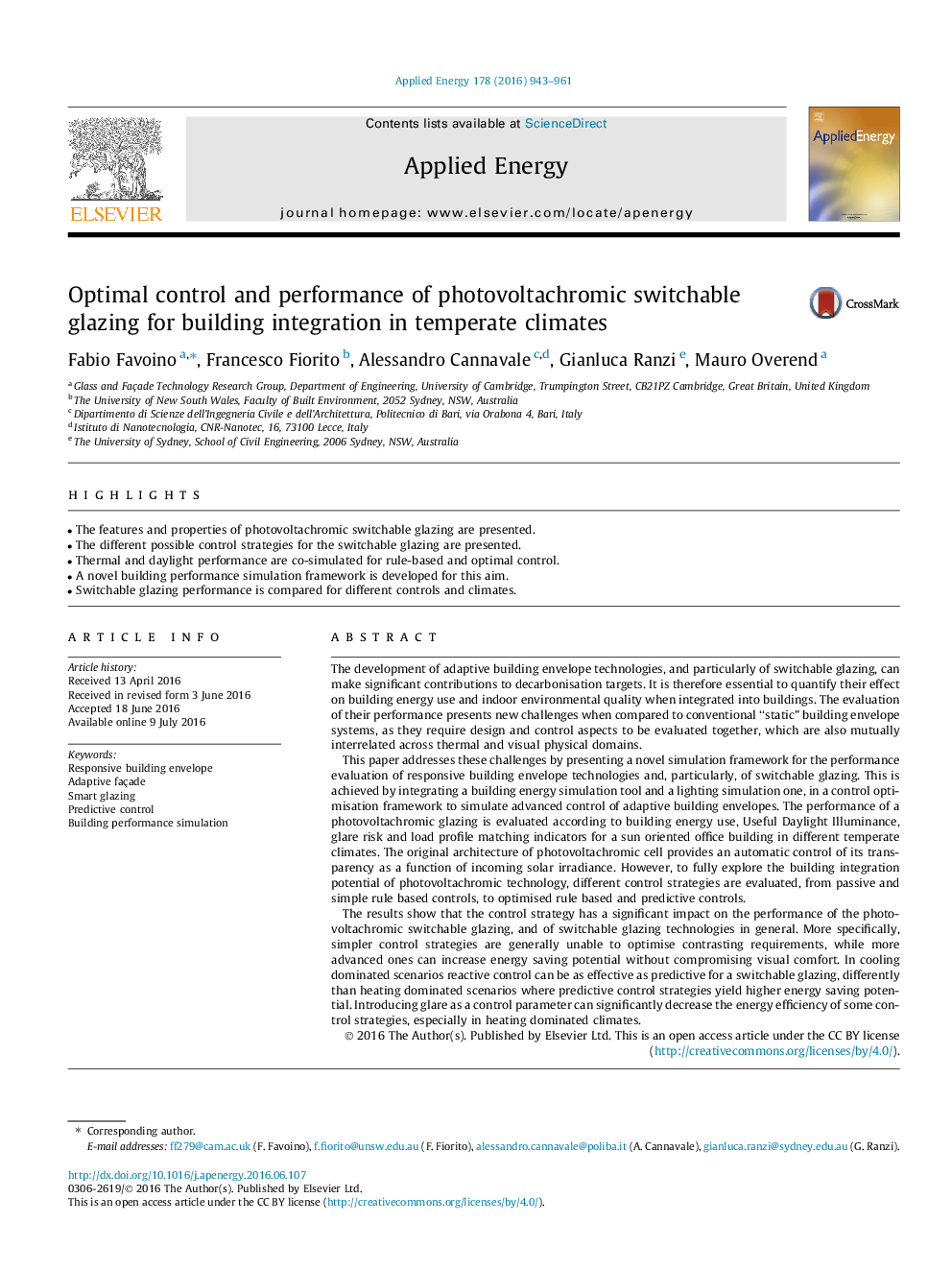| Article ID | Journal | Published Year | Pages | File Type |
|---|---|---|---|---|
| 6682635 | Applied Energy | 2016 | 19 Pages |
Abstract
The results show that the control strategy has a significant impact on the performance of the photovoltachromic switchable glazing, and of switchable glazing technologies in general. More specifically, simpler control strategies are generally unable to optimise contrasting requirements, while more advanced ones can increase energy saving potential without compromising visual comfort. In cooling dominated scenarios reactive control can be as effective as predictive for a switchable glazing, differently than heating dominated scenarios where predictive control strategies yield higher energy saving potential. Introducing glare as a control parameter can significantly decrease the energy efficiency of some control strategies, especially in heating dominated climates.
Related Topics
Physical Sciences and Engineering
Energy
Energy Engineering and Power Technology
Authors
Fabio Favoino, Francesco Fiorito, Alessandro Cannavale, Gianluca Ranzi, Mauro Overend,
